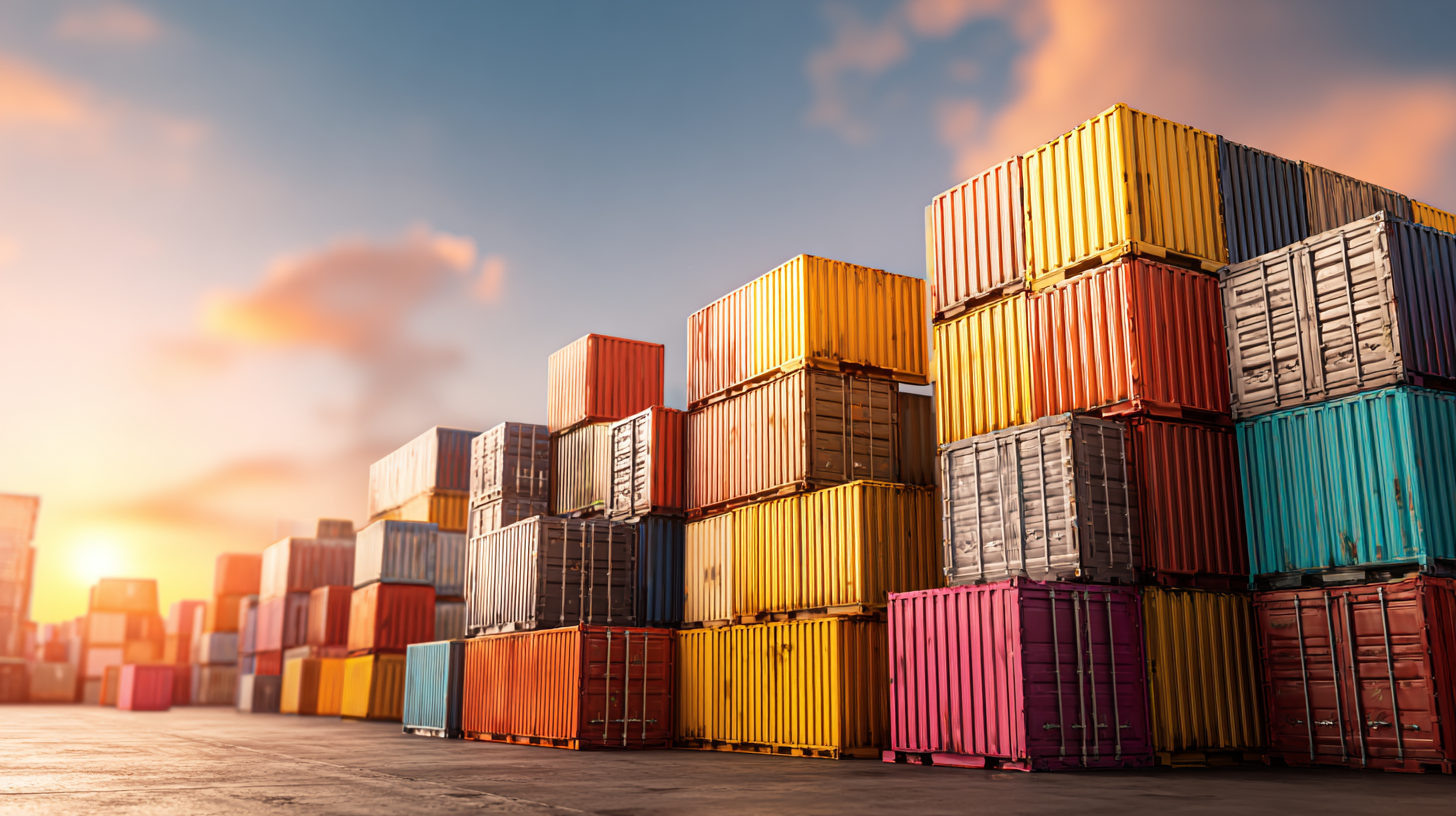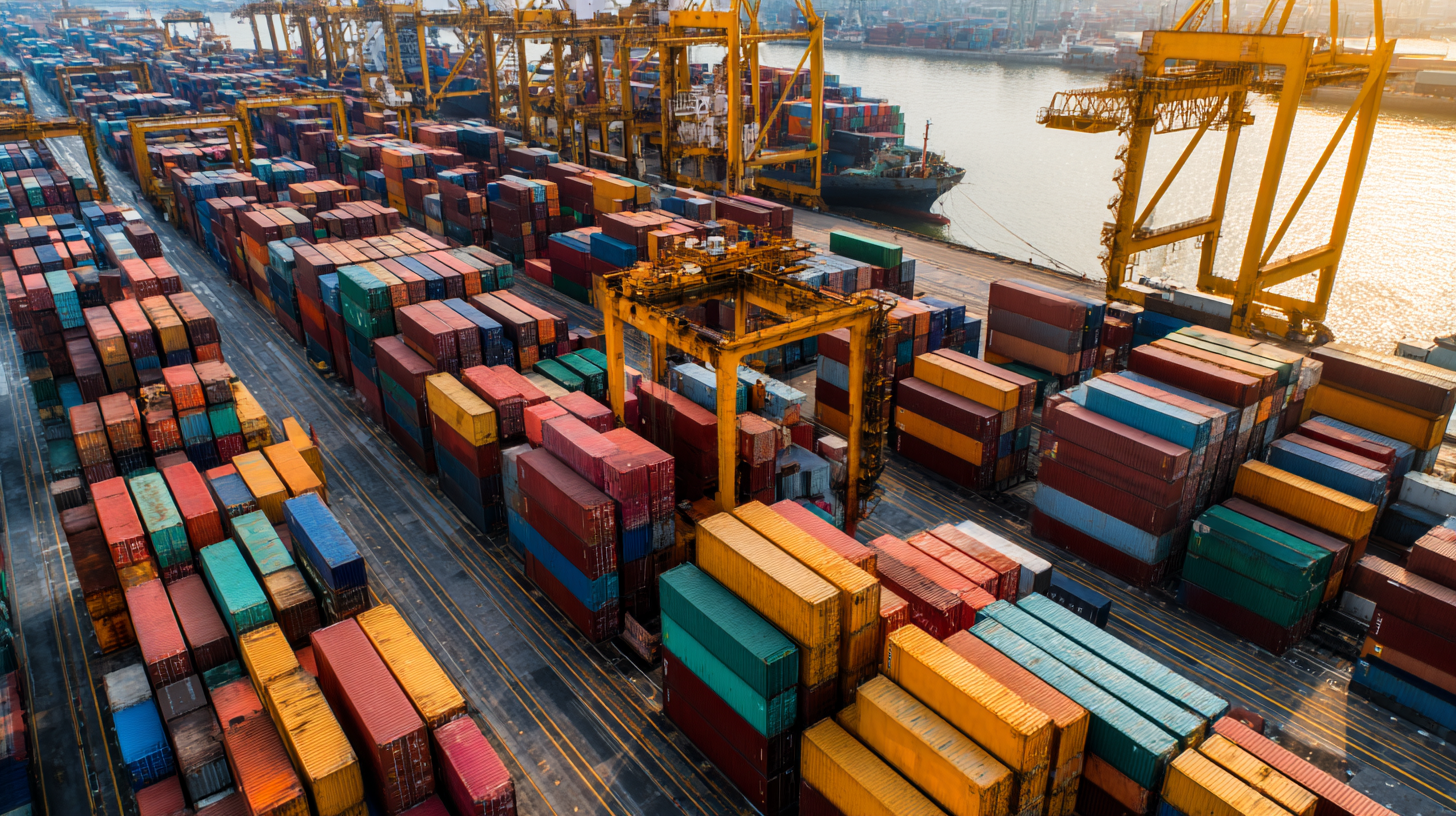Innovative Trends in Container and Packaging Solutions Driving Sustainability and Reducing Waste
In an era where sustainability is at the forefront of consumer consciousness, the evolution of container and packaging solutions has emerged as a pivotal focus for industries worldwide. Innovative trends in container and packaging are not merely about protecting goods; they play a significant role in reducing waste and minimizing environmental impact.

From biodegradable materials to smart packaging technologies, companies are exploring various avenues to make their packaging more eco-friendly and efficient. This transition reflects a broader shift in consumer preferences towards sustainable products and practices. As businesses strive to meet these demands, the integration of cutting-edge container and packaging strategies becomes essential, driving not only corporate responsibility but also market competitiveness.
In this guide, we will explore how to harness these innovative trends in container and packaging to foster sustainability and reduce waste, ensuring a greener future for all.
Innovative Materials for Sustainable Container and Packaging Solutions
The shift towards sustainability in the packaging industry has led to the development of innovative materials that significantly reduce environmental impact. According to a report by Smithers Pira, the global market for sustainable packaging is expected to reach $500 billion by 2027, driven by increasing consumer demand for eco-friendly options. These materials include bioplastics derived from plant-based sources, recycled plastics, and paper alternatives that not only minimize waste but also enhance biodegradability. For instance, bioplastics can reduce carbon emissions by 50% compared to traditional petroleum-based plastics, making them a vital player in the quest for sustainability.
Moreover, brands are increasingly adopting smart packaging technologies that incorporate sustainable materials. A study by MarketsandMarkets indicates that the smart packaging market is projected to grow from $27.3 billion in 2020 to $46.4 billion by 2025, driven by innovations that improve supply chain efficiency and reduce waste. For example, intelligent labels and QR codes enable better inventory management and traceability, leading to optimized usage of resources and minimized spoilage. The integration of these innovative materials and technologies is crucial for brands aiming to meet regulatory requirements and consumer expectations while promoting a more sustainable future in packaging.

Implementing Smart Packaging Technologies to Minimize Waste
The integration of smart packaging technologies is revolutionizing the way the industry addresses issues of waste and sustainability. These innovative solutions, which often incorporate sensors and data analytics, allow for enhanced tracking and monitoring of products throughout their lifecycle. By providing real-time information about the condition and location of goods, smart packaging helps companies optimize their supply chains, reducing excess inventory and minimizing the risk of spoilage. This not only contributes to waste reduction but also improves overall operational efficiency.
Moreover, smart packaging can play a crucial role in consumer engagement and education. By utilizing QR codes or NFC technology, consumers can access detailed information about the product, including its environmental impact, recycling instructions, and best-before dates. This transparency empowers consumers to make more informed choices, promoting sustainable behaviors and fostering a culture of recycling. As the industry continues to embrace these technologies, the potential for reducing waste and driving sustainability becomes even more promising, ultimately transforming packaging from a traditional function into a vital component of responsible production and consumption.
Innovative Trends in Container and Packaging Solutions Driving Sustainability and Reducing Waste - Implementing Smart Packaging Technologies to Minimize Waste
| Technology/Trend | Description | Environmental Impact | Waste Reduction Potential |
|---|---|---|---|
| Biodegradable Packaging | Packaging materials that decompose naturally. | Reduces landfill waste and pollution. | Up to 80% reduction in plastic waste. |
| Smart Packaging | Packaging embedded with sensors for monitoring freshness. | Reduces food waste through improved supply chain transparency. | Estimated 30% less food waste. |
| Recyclable Materials | Use of materials that can be reprocessed and reused. | Decreases the need for raw materials. | Could lead to a 50% reduction in single-use plastics. |
| Minimalist Packaging | Packaging that uses fewer materials without compromising quality. | Less material waste and lower carbon footprint. | Can cut packaging waste by over 40%. |
| Edible Packaging | Packaging that can be safely consumed with the product. | Eliminates waste entirely from the packaging. | Potential for 100% waste reduction in certain products. |
Circular Economy Strategies in Packaging Design: A Practical Approach
The shift towards a circular economy in packaging design is becoming increasingly crucial as businesses seek to address sustainability challenges while minimizing waste. According to a report by the Ellen MacArthur Foundation, transitioning to a circular economy could unlock $4.5 trillion in economic growth by 2030 globally. This is particularly pertinent in the packaging sector, where more than 300 million tons of plastic are produced annually, and a significant percentage ends up in landfills or oceans. By adopting circular principles, companies can design packaging that is not only recyclable but also regenerative, promoting the reuse and repurposing of materials throughout their lifecycle.
Tips: Engage with suppliers who prioritize sustainable materials, such as recycled plastics or biodegradable options, to help reduce your footprint.
Implementing circular economy strategies involves innovating product design to ensure that packaging is easy to disassemble and recycle. Brands such as Unilever and Coca-Cola are leading the way by committing to using 100% recyclable packaging by 2025. Additionally, adopting designs that facilitate refillable solutions can significantly decrease material consumption and waste generation.
Tips: Consider incorporating minimalist packaging designs that reduce excess material, providing both an eco-friendly option and a cost-efficient solution.
Innovative Trends in Container and Packaging Solutions
This chart illustrates the percentage of companies adopting sustainable packaging solutions over the years, showcasing the growing trend towards circular economy strategies in packaging design.
Consumer Engagement in Sustainable Packaging: How to Educate and Inspire
In the quest for sustainability, consumer engagement in packaging has emerged as a pivotal factor. The growing awareness of environmental issues compels brands to not only adopt sustainable packaging solutions but also to actively educate and inspire their consumers. Engaging storytelling, transparency about the materials used, and the impact of packaging choices can create a deeper connection between the brand and the consumer, motivating them to make more environmentally conscious decisions.

Tips for engaging consumers include utilizing social media platforms to share informative content about sustainable practices, conducting interactive workshops that explore the lifecycle of packaging materials, and providing incentives for customers who participate in recycling programs. These approaches not only inform consumers but also foster a community that champions sustainability.
Moreover, brands can encourage consumer involvement by highlighting the benefits of choosing eco-friendly packaging. This could include showcasing how such choices contribute to waste reduction and environmental preservation. By integrating consumer feedback into packaging design, companies can create more appealing, effective, and sustainable solutions that resonate with their audience, ultimately driving a more responsible consumption culture.
Regulatory Trends and Their Impact on Sustainable Packaging Practices
Regulatory trends are increasingly shaping sustainable packaging practices as governments and organizations worldwide recognize the need to address environmental concerns. Recent reports indicate that by 2025, 70% of packaging will need to be recyclable, reusable, or compostable, driven by regulations like the European Union's Single-Use Plastics Directive. This directive aims to reduce marine litter and encourages manufacturers to innovate within the packaging sector to meet these stringent requirements. Brands that adapt quickly to these regulations not only comply but can also enhance their market positioning by appealing to environmentally conscious consumers.
Moreover, the impact of regulatory changes is evident in the rise of alternative materials in packaging. According to a study by Smithers Pira, the global market for sustainable packaging is projected to reach $800 billion by 2024, with a significant portion attributed to biodegradable and compostable options. As brands pivot to integrate these materials, they not only mitigate their environmental footprint but also align with regulatory expectations. With upcoming legislation anticipated globally, the compliance landscape will continue to evolve, compelling companies to prioritize sustainable innovation in their packaging solutions.
Related Posts
-

What are the Benefits of Using Eco-Friendly Cosmetic Containers
-

The Ultimate Guide to Choosing the Best Plastic Jars with Lids for Every Storage Need
-

Discover the Benefits of Using Glass Jars with Lids for Food Storage and Preservation
-

The Amazing Health Benefits of Honey Bottles You Never Knew About
